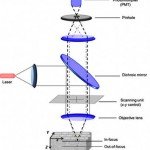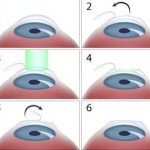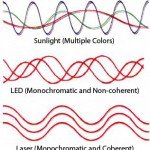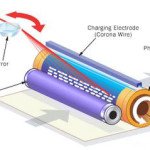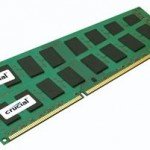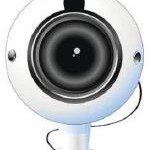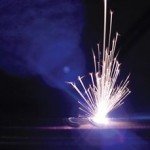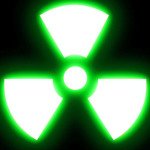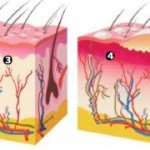What is Fiber Optics ? How Fiber Optics Works?
In order to communicate reliably over long distances with a beam of light, one cannot simply shine the light through the atmosphere. Too many impurities will disrupt the beam—fog, insects, dust—almost anything that is visible. A great variety of invisible things can serve to scatter, absorb, or reflect laser light. Once a laser beam has been modulated to carry information, it must be transmitted along a “laser friendly” medium, one that minimizes disruptions to the beam itself.
This is the role of fiber optic cable. Fiber-optic cable is to lasers what plumbing is to water. It provides a path by which light can travel for fairly long distances without disruption. Fiber-optic cable is a conduit for light, or more generally, a conduit for a somewhat larger class of electromagnetic waves that includes visible light. It is a purely passive medium that protects the modulated wave inside it. Ordinary glass, the type of glass used in windows, for example, is something that is usually characterized as transparent, but it is not nearly transparent enough for optical fiber, which is an extraordinary technical achievement.
Optical fiber is often created in continuous lengths of 7.5 miles (12 km). Theoretically speaking, there is no reason why it could not be made in even longer lengths, but the spools on which the cable is stored would become too large and unwieldy. The material out of which the fiber is created is extremely pure. It is so pure that it is easily possible to shine a laser of the right wavelength in one end and have it emerge 7.5 miles (12 km) down at the other end almost as bright as it entered—“almost” because any signal degrades somewhat as it travels between sender and receiver. This is true whether it is an electrical signal transmitted along a copper wire, a radio wave transmitted through space, or a laser beam transmitted along a fiber optic cable. But fiber-optic cable is currently the best of all mediums through which to transmit light. In practice, the 7.5-mile (12-km) lengths of cable are joined to produce much longer pathways, and the initial signal is conveyed through these longer pathways. The signal may require no amplification until it has traveled more than 62 miles (100 km) of fiber.
Eventually, however, even the clearest signal transmitted over the best cable will become weak. Amplifiers are installed at strategic points along the fiber-optic pathways to retransmit a stronger version of the received signal. In this way, the signal is preserved until it reaches its destination. While the technology involved in producing modern fiber-optic filament is extremely complex, the concepts on which it is based are relatively straightforward. First, the material out of which the filament is constructed must be as pure as possible. Second, the fiber must contain the light. Unless the cable is properly built, light can escape because the light rays must necessarily impinge on the sides of the fiber as it twists up and down and around corners. The key to confining the light within the fiber lies in manipulating a characteristic of the materials out of which the fiber is made; that characteristic is called the index of refraction. Light travels through a vacuum at 186,000 miles per second (300,000 km/s). But in other materials, air or water, for example, light travels more slowly. The index of refraction for a particular material is a fraction formed by comparing the speed of light in a vacuum to the speed of light in the material in question.This is the formula:
Because light is at its fastest in a vacuum, the index of refraction is always a number that is greater than or equal to one. For purposes of illustration, the index of refraction in air is 1.0003, which shows that light travels through air almost as fast as it travels through a vacuum. Light in water is considerably slower, with an index of refraction of 1.33. Now suppose that two transparent materials are placed side by side. Suppose further that the materials have different indices of refraction. If a ray of light is propagating through the material with the larger index of refraction—that is, it is propagating through the slower of the two pathways—then when it strikes the boundary between the two materials it will be reflected back inside the material with the larger index of refraction, provided that the angle at which it strikes the material is not too steep. In other words, as long as it is a “glancing blow” the light will remain inside the material with the larger index of refraction. Fiber-optic cable actually consists of two materials, a core material and a cladding or shielding material. The core material has a slightly larger index of refraction (1.48) than the cladding (1.46).
The small difference between the two indices of refraction ensures that the light remains confined to the core as long as the cable is not bent too sharply. These two relatively simple physical principles, purity of material and maintaining the difference in the index of refraction between the core and cladding, enable light to be successfully transmitted over fairly long distances. Fiber-optic cable is insensitive to the light source, and other sources besides lasers are used to transmit light along the cable. Currently, lasers and light-emitting diodes (LEDs), the tiny brilliant lights often used on the controls of many stereo systems, are used to transmit signals along fiber-optic cables. The wavelength of the lasers used is either 1.310 micrometers (μm) or 1.550 μm. The LEDs emit light with wavelengths of 850 nanometers and 1.300 μm. (Notice that the laser wavelengths are in the infrared and so are invisible. But because they can still cause irreparable harm to one’s vision, never look into a fiberoptic communications line.) Fiber-optic cable is of such high quality and low cost—and it can carry so much information—that today all high-capacity communication networks rely on it at some point in the system. Fiber-optic lines are also used to transmit laser light in various industrial and medical applications. It is as important to many applications of lasers as the lasers themselves.



